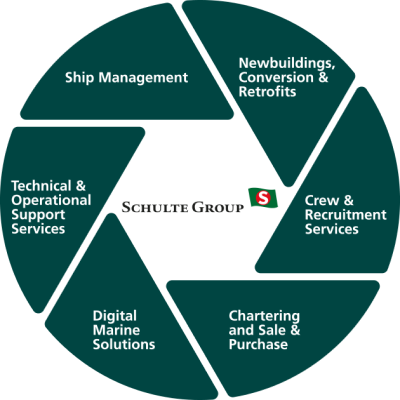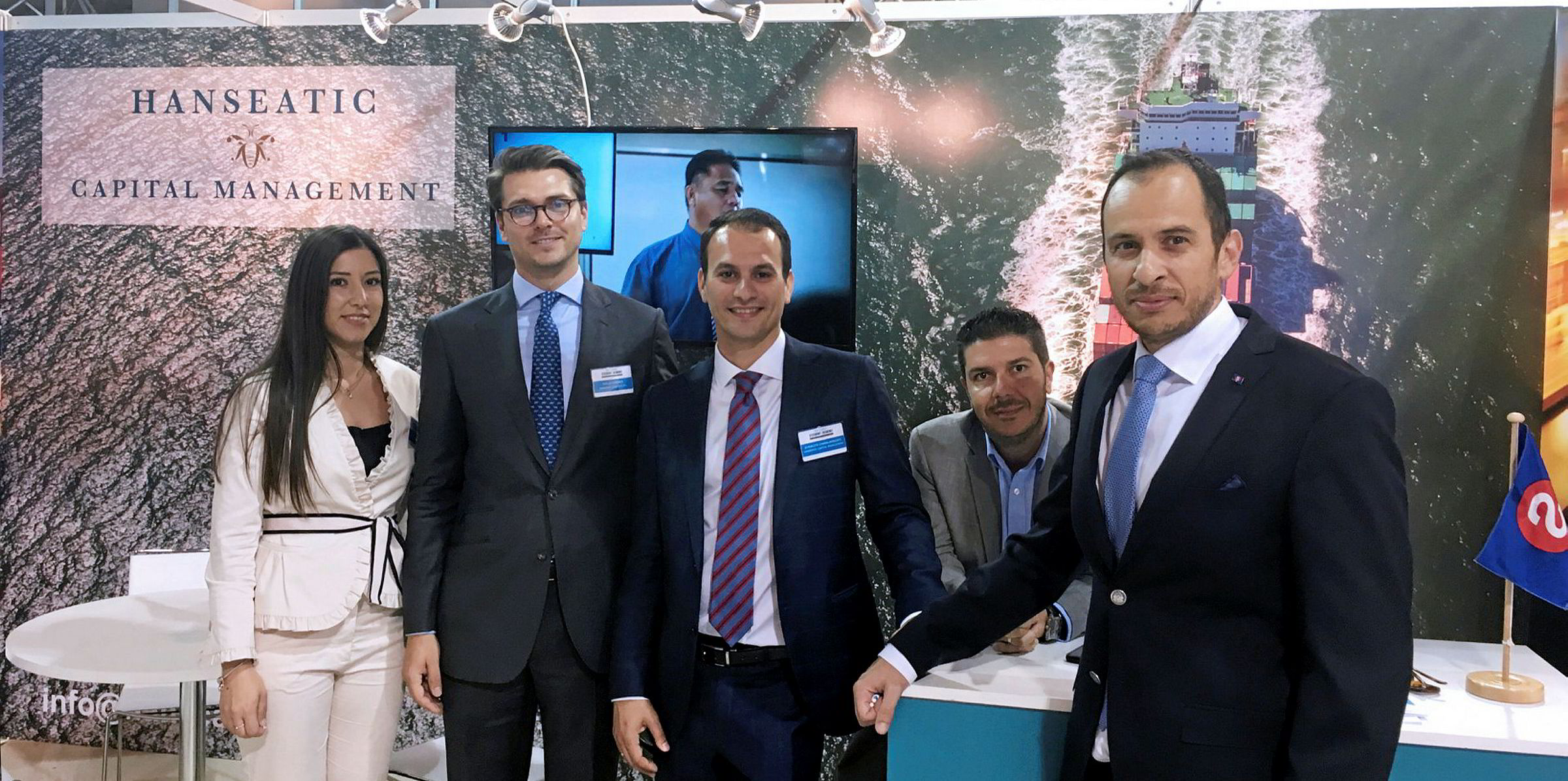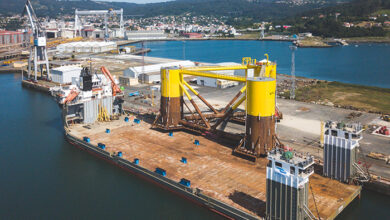Schulte Group Presents New LNG Bunker Vessel Design

Schulte Group unveiled its next-generation design for an liquefied natural gas (LNG) bunker vessel (LBV), which it said is engineered to be easy-to-use and reduce last-mile costs.
The unique vessel design, presented at Gastech Exhibition and Conference in Milan, does away with the need for fenders and spacer pontoons, replacing them with an integrated outrigging system that’s compatible with any vessel type and can be operational in five minutes with the push of a button.
Same applies to the telescopic crane, which extends over 40 meters over the water and can be adjusted to any required reach. The vessel fits with all known and soon-to-come LNG-fueled vessels.
It also features warming-up, gas freeing and aeration equipment to prepare LNG-fueled vessels for drydock, and flexible design options so that the LBV can be tailored to specific requirements. The bunker vessel can be operated by a smaller crew while still ensuring high safety standards.
According to the Schulte Group, all of these components are geared toward reducing the capex (capital) and opex (operating) costs for owners and operators, and ultimately will achieve low last-mile costs for the LNG-fuel industry, including the LNG-fueled client vessels.
Johan Lillieskold, Gas Solutions Specialist, LNG Competence Centre, at Schulte Group said during his conference presentation at Gastech, “We examined the market’s current requirements and recognized the need for a straightforward LNG fuel vessel that reduces the cost of last-mile delivery for vessel operators. We have gone back to the drawing board and defined the operational specifications of what the ideal LNG bunker vessel should offer, doing away with any additional or unnecessary gear and cumbersome operations.”
The LBV has been designed to maximize operational compatibility, including: vessels with protruding structures from the hull, such as those typically found on cruise liners with protruding lifeboats, deck structure and balconies; vessels with short bodies such as high-speed, slender container vessels; those with high freeboards including large crude oil and bulk carriers.
Lillieskold said, “The number of LNG-fueled vessels planned to enter into operation in the next few years is significant as operators increasingly turn to LNG to reduce environmentally and climate harmful emissions. The current arrangements for LNG bunkers, both land based and sea based, will not be sufficient or suitable for the increasing volume of LNG-fueled tonnage planned for future years. This new flexible vessel design will serve both today’s tonnage and future newbuilds.”
Schulte Group’s LBV has been developed in accordance with the International Code for Safety for Ships Using Gases or other Low-Flashpoint Fuels (IGC) Code and other IMO regulations. It also complies with and is prepared for new and future decarbonizing rules and regulations like IMO’s Carbon Intensity Index (CII) and EU’s Fit-For-55 programs.

The main business areas of the Schulte Group are ship owning, which has the longest tradition in the Schulte family and is the core business of Bernhard Schulte, and ship management operated through Bernhard Schulte Shipmanagement (BSM).
The Schulte Group additionally controls several specialised maritime services companies, such as Mariapps Marine Solutions, a leading maritime software development company, and Schulte Marine Concept, the newbuilding supervision arm of the Group.
Other services provided by member companies of the Schulte Group are crew and guest catering, inspection services, port agency services, and many more.
In this context, measures are either built into the design or available for future upgrade with, for example, a battery hybrid solution or retrofitted for hydrogen power. In combination with a battery hybrid solution and “green” shore power, depending on the operation profile, the vessel could operate largely carbon-emissions free.















